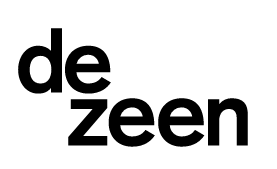
Welcome to iGrow News, Your Source for the World of Indoor Vertical Farming
Welcome To Our Farm Within A Farm
But now all of the hard work and waiting has come to fruition as we are now ready to welcome you into our new Micro Farm: A Farm Within a Farm.
August 5, 2021
What is CEA?
Over the past year or so you may have heard us at Vertical Harvest referring to our “conversion” project – the construction of which has been the cause of some product delays and shortages. But now all of the hard work and waiting has come to fruition as we are now ready to welcome you into our new Micro Farm: A Farm Within a Farm.
The idea emerged when we noticed an increase in demand from our local chefs and grocery stores to supply more microgreens and petite greens. This happened to align with an internal ambition we have been fostering to implement a fully Controlled Environment Agriculture (CEA) system within our greenhouse. The new compartment has 4,000 sq feet of rack systems growing micro and petite greens fully independent of the whims of nature.
This farm is our next iteration for creating efficient and scalable growing systems. As we are seeing greater fluctuations in our local and national climates it has become increasingly important to us to delve into the capabilities of a growing system that is fully self-contained and not dependent on external changes in light and temperature. Instead, the greens will be nurtured in light and temperature conditions that are ideal to their growth cycles. This space has also increased our greenhouse production by 200%, meaning we can get our community more of the greens it loves both at home and when dining out.
Though our Maine greenhouse will incorporate some different technology, it will have a tray system that is very similar to this new compartment; so we have also reserved a portion of this new space to trial products and improve growing methods to ensure that our Westbrook greenhouse will have all the resources and information needed to hit the ground running when it plants its first seeds. We are already growing in the new space, training our employees on the new system, and getting our greens to customers. Vertical Harvest has always integrated different techniques and changed to growing demands, this project has been challenging and rewarding and will go on to influence all of our future greenhouses.
Swedish Construction Faces "Crisis Situation" As Environmental Court Shuts Down Cement Factory
Construction in Sweden could grind to a halt after the country's biggest cement factory was stripped of its licence to mine limestone on environmental grounds
By Marcus Fairs
July 14, 2021
Construction in Sweden could grind to a halt after the country's biggest cement factory was stripped of its licence to mine limestone on environmental grounds.
The ruling by the Swedish Supreme Land and Environmental Court last week means that the Cementa plant at Slite in Gotland could be forced to end production on 1 November.
Matilda Hoffstedt, manager of the plant, said the ruling would create "a crisis situation for Swedish cement supply" while Cementa said work on Foster + Partners' Slussen masterplan in Stockholm (top image) could be impacted.
However, Greenpeace campaign manager Carl Schlyter welcomed the decision.
"It is wonderful that the court chooses to comply with the environmental laws we have, not to aggravate the species crisis and that incomplete environmental impact assessments are not accepted," Schlyter told Swedish news organisation Dagens PS.
Sweden's second-largest CO2 emitter
The plant produces around three-quarters of all the cement used in Sweden. It is also the second-largest source of greenhouse gas emissions in the country, responsible for three per cent of all CO2 emissions.
The court ruling overturns an earlier decision by a lower court to grant the factory a licence to continue mining limestone, an essential ingredient in cement, for another 20 years.
"They tossed out their application to keep on mining limestone," said Daniel Jacobs, a journalist working at Dagens PS. "Now the construction industry is saying they're not going to be able to build anything in Sweden."
The licence was refused due to concerns over the impact on groundwater in the environmental assessment the factory had submitted. Greenpeace has also accused the plant of using its kilns to incinerate toxic waste without a permit.
Major construction projects at risk
Cementa, which is owned by giant German producer HeidelbergCement, said the decision would jeopardise construction projects in Sweden including major projects including the Slussen and Förbifart infrastructure projects in Stockholm and the Västlänken tunnel in Gothenburg.
“A renewed mining permit in Slite is a prerequisite for a long-term cement supply in Sweden, including for large construction and infrastructure projects such as Slussen, Förbifart Stockholm and Västlänken," the company said.
Cementa is the only cement producer in Sweden. It has a second, smaller factory Skövde in the south of the country.
Cement production is responsible for an estimated eight per cent of global carbon emissions. The emissions are largely due to the way that limestone, which is the main ingredient in cement, is processed.
The rock is crushed and burned to extract calcium, which is the binding agent used in cement, releasing the carbon into the atmosphere in the process.
Several companies are investigating ways of producing emissions-free concrete that does not require traditional cement including Carbicrete, which has developed a way of using industrial slag instead of cement as a binding agent.
The image of the Slussen masterplan is by Foster + Partners.





